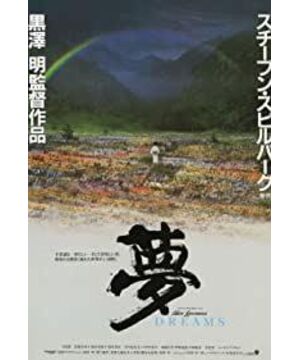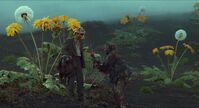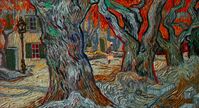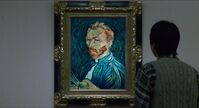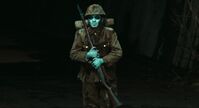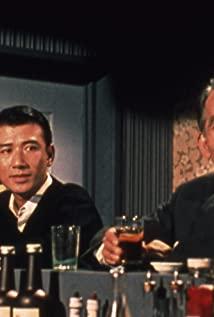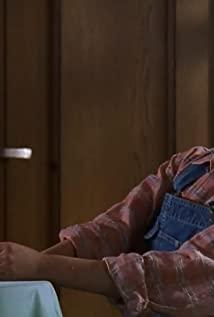Akira Kurosawa's "Dream", through prose narrative and segmented structure, raises the spiritual height of film art work to the level of philosophical category to reflect the connection between self, others and the world. The narrative of the film is composed of eight dream stories: Sun Rain, Momota, Snowstorm, Tunnel, Van Gogh, Mount Fuji, Ghost Cry, and Waterwheel Village. The two dreams of and describe the vision of the unknown as a child. As a child, the protagonist is eager for knowledge, unable to control his thirst for knowledge to peep into the outside world. The mother's punishment to the child in shows that the child must bear the consequences for wrongdoing. Childhood curiosity and thirst for knowledge will make him grow up and at the same time make his mistakes pay due price. This is a long and necessary life process. and show the brutal growth dilemma of adulthood, while , , and show the destruction of the world in adulthood. When mountaineering encounters a blizzard, when life is at stake, the "Snow Girl" who symbolizes the gentle trap is the comfort zone of death. Only by persevering and struggling can the "camp" of hope appear in front of you. As a pioneer of Post-Impressionism, Van Gogh had a profound influence on Akira Kurosawa's artistic creation, and his experience of self-mutilation resonated with Akira Kurosawa's suicide experience. The beauty of Van Gogh's paintings and the beauty of Akira Kurosawa's films are the same ultimate beauty, which reflects Akira Kurosawa and his "confidantes"'s pursuit of works of art. shows people and life, and accuses the human beings of the damage and indelible pain caused by war. reveals the side effects of scientific and technological progress to human beings, and also shows the natural problems that environmental pollution will bring disasters to human beings. In "Ogre", the abnormal relationship between man and nature is reflected through bizarre stories, in order to appeal to the public to love and respect nature. shows the vision of old age to see through the true meaning of life. Only when one returns to the original at the end of life can one realize the value of life. Humans should follow nature and return to nature, and everything in the world should be harmonious.
Director Akira Kurosawa expresses the beauty and ugliness of things in different colors. The natural beauty in Japanese films is fresh and refined, with utopian connotations. The film is colorful but not exaggerated, with gurgling rivers, lush forests, mist-shrouded green mountains, wild flowers all over the mountains, etc. It shows the poetic picture of Japan and the idyllic happy life through gentle colors, arousing the audience's interest in this film. Really natural endless yearning. In addition, the ugliness in the movie is also unique. For example, the "Tunnel" segment begins with cool tones, borrowing terrifying blacks, eerie reds, and bleak blues to express his distaste for war. The bottomless tunnel and the gloomy sky all show the emotional impact of war on people. The graffiti on the soldier's face intuitively makes the audience feel the inner grief of the dead soldier, which has a sense of irony and criticism.
The film "Dream" is the pinnacle of director Akira Kurosawa. The film uses image narrative and image language to express imagery, citing the philosophical relationship between man and nature, man and society, man and life, and man and himself. , which highlights the national characteristics of Japan and forms a mysterious artistic effect, while the grotesque images and rich image representations show the director's serious thinking about life and film art.
View more about
Dreams reviews


